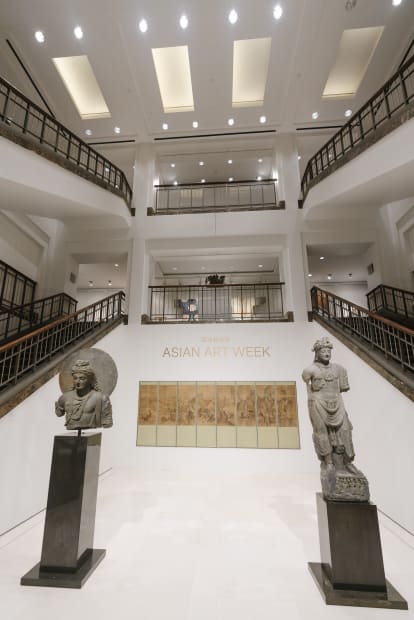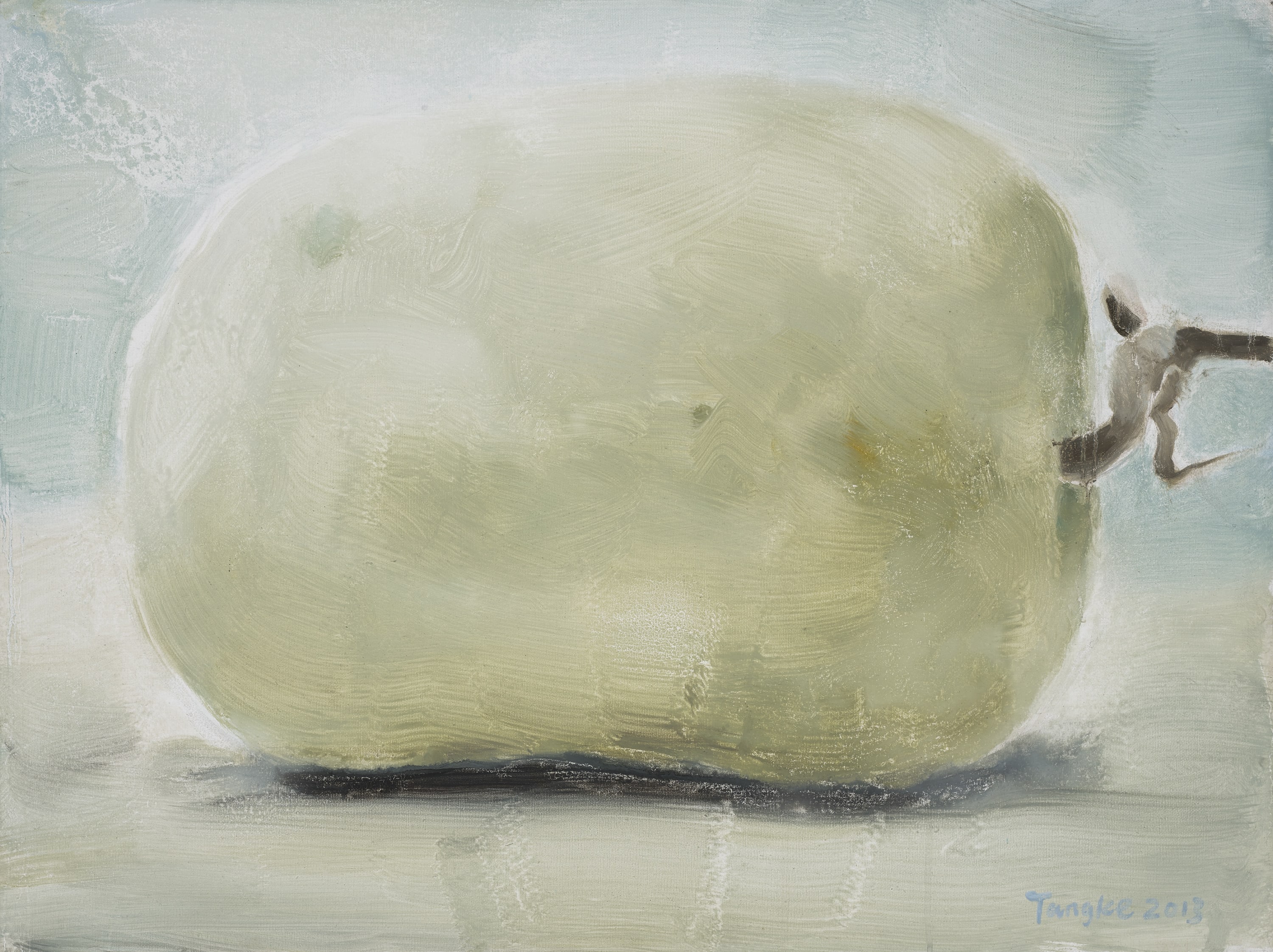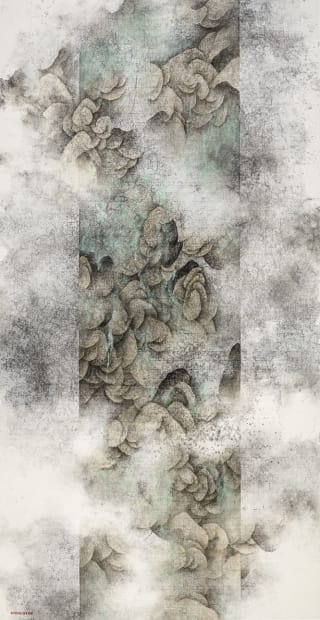The collaboration between painter Arnold Chang and photographer Michael Cherney creates a dialogue between two mediums and provides a new way of reading white ground. Since 2009, Chang and Cherney have created a series of artworks that merge painting and photography. To make these works, Cherney first selects one or two details from his photographs and prints it on the kind of Chinese painting paper that Chang prefers. He then sends a number of these sheets to Chang, who responds by painting in a way that connects with the patterns on Cherney’s photograph. Both artists’ practices are informed by the aesthetics of traditional Chinese painting. Their visual languages—despite the difference in medium–resonate with each other. The white ground in these works constitutes part of the photographic space as well as that of the painted space. It can be seen as Cherney’s photographic index of mountain ridges, as well as Chang’s painting of an imaginary landscape emerging out of the clouds.
Christie’s Contemporary Art Asia department invited Fu Qiumeng to curate the online exhibition White Ground during Asia Week New York 2020. For the first time, her curatorial work brings together artists active in different systems of art and provokes relevant discussions to expand the discourse on Asian contemporary art.
Fu Qiumeng is the founder of Fu Qiumeng Fine Art in New York. She is dedicated to bringing artworks rooted in traditional aesthetics into the realm of contemporary art. She initiated the QM Project in 2018, aiming to connect traditional Chinese aesthetics and global modern and contemporary art through academic research.
Fu Qiumeng Fine Art represents leading figures in Chinese art. In January 2020, they held the solo exhibition of Fung Ming Chip, The Null Set. One of Fung’s works in this exhibition entered the permanent collection of the Art Institute of Chicago. In 2019, Arnold Chang and Michael Cherney’s collaborative work Mt. Huang Album was on view at Streams and Mountains without End: Landscape Traditions of China at the Metropolitan Museum of Art. In 2017, Yau Wing Fung was included in the show Wu Bin: Ten Views of a Lingbi Stone at the Los Angeles County Museum of Art. In the same year, Tai Xiangzhou’s Eight Views of Xiao and Xiang became part of the permanent collection of the Princeton University Art Museum.









